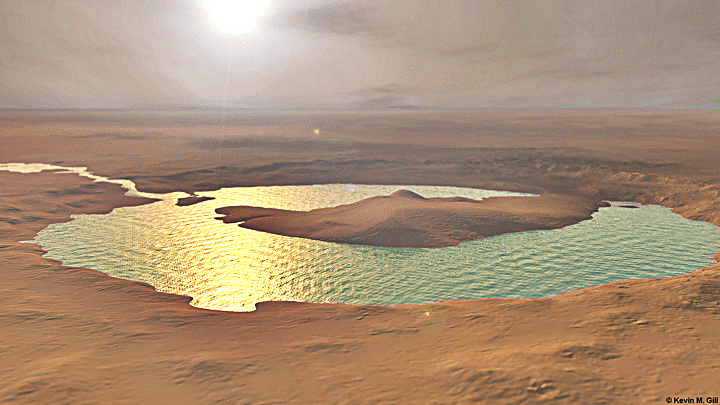NASA has released a stunning final mosaic of Saturn from the Cassini spacecraft, taken just days before it was destroyed in the gas giant's atmosphere. The image above was stitched together from 42 red, blue, and green filter images taken by Cassini on September 13, 2017. The mosaic includes not just Saturn and its rings, but six of its moons too including Enceladus and Pandora.
"It was all too easy to get used to receiving new images from the Saturn system on a daily basis, seeing new sights, watching things change," said Elizabeth Turtle, an imaging team associate at the Johns Hopkins University Applied Physics Laboratory, Laurel, Maryland, in a statement. "It was hard to say goodbye, but how lucky we were to be able to see it all through Cassini's eyes!"
Cassini took 80 wide-angle images over the course of two hours on September 13, 42 of which were used for this mosaic. The view is looking towards the sunlit side of Saturn's rings from a distance of about 1.1 million kilometers (698,000 miles) as it made its final approach to the planet.
| Caption: This annotated version of the mosaic shows the location of the moons. NASA/JPL-Caltech/Space Science Institute |
Cassini was purposefully sent plummeting into the atmosphere of Saturn on September 15, as the spacecraft was running out of fuel. Scientists didn't want it to accidentally crash on one of Saturn's potentially habitable moons in the future and contaminate them, so the decision was made to destroy it instead. It arrived at Saturn 2004, taking hundreds of thousands of images in its 13 years orbiting the gas giant. Its discoveries have led to more than 3,000 scientific papers and counting, and include things like finding plumes of water ejecting from the icy surface of Enceladus.
 |
| This panoramic was created by combining 165 separate images taken by Cassini's wide-angle camera over a three hour period on September 15, 2006. NASA / JPL / Space Science Institute. |
"Cassini's scientific bounty has been truly spectacular – a vast array of new results leading to new insights and surprises, from the tiniest of ring particles to the opening of new landscapes on Titan and Enceladus, to the deep interior of Saturn itself," said Robert West, Cassini's deputy imaging team leader at NASA's Jet Propulsion Laboratory in Pasadena, California, in the statement.
Now the Cassini's mission is at an end, we are devoid of a spacecraft in orbit around Saturn. But there are plenty of other exciting missionson the way, and hopefully some will inspire us with their images in the same way Cassini did.
Via IFLScience

Post A Comment:
0 comments: